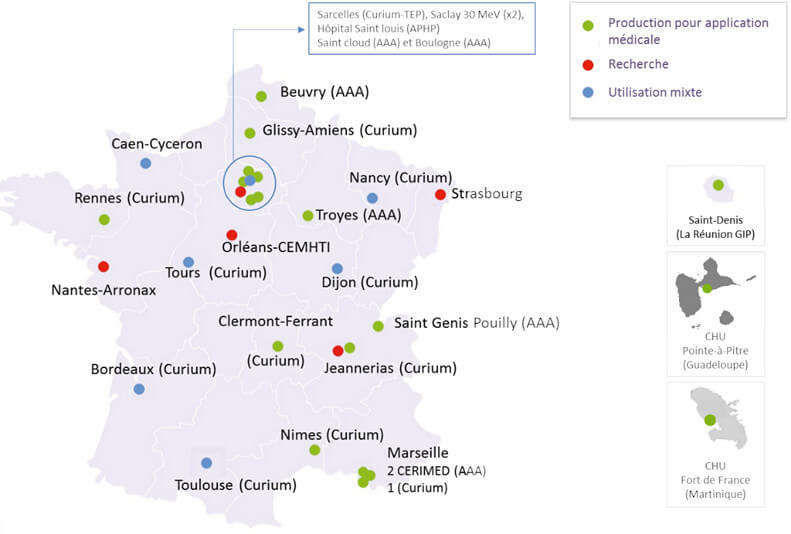 | |||
There are over 200 cyclotrons used in part or in full for medical purposes in Europe. Most of them have energy and an intensity limited to the production of fluorine-18.
In France, there are more than 31 cyclotrons dedicated to the production of radionuclides for nuclear medicine (see map below). Compared with them, the Arronax cyclotron is unique in its characteristics and missions.

Figure 1: Geographical breakdown of radioisotope production cyclotrons in France.
Cyclotrons for the requirements of PET cameras
A cyclotron development program has been implemented by industrialists (Curium Pharma and AAA/Novartis) to cover the needs of PET cameras already or soon to be installed in France. These cyclotrons are defined specifically to produce fluorine 18.
A number of these cyclotrons are provided for use in research on fluorine 18 and possibly short-lived isotopes (carbon 11, oxygen 15).
Cyclotrons for biomedical research
A few cyclotrons are dedicated to the production of light radioisotopes for biomedical research.
Their programs are primarily oriented towards positron emission imagery in neuropharmacology and oncology (fluorinated tracers, carbon 11).
Industrial cyclotrons
Curium Pharma has two 30 MeV cyclotrons dedicated to the commercial production of isotopes for nuclear medicine (thallium 201, iodine 123, gallium 67).
Cyclotrons for nuclear and materials research
These cyclotrons are integrated into fundamental research programs in physics, for furthering knowledge about matter. In France, we have the large national heavy ions accelerator (GANIL) in Caen (95 MeV) for nuclear physics research and the CEMHTI for materials research.
Radiotherapy cyclotrons
These cyclotrons are specialized in proton therapy, hadron therapy and neutron therapy. The Orsay (200 MeV) – Nice (65 MeV) cyclotrons.

